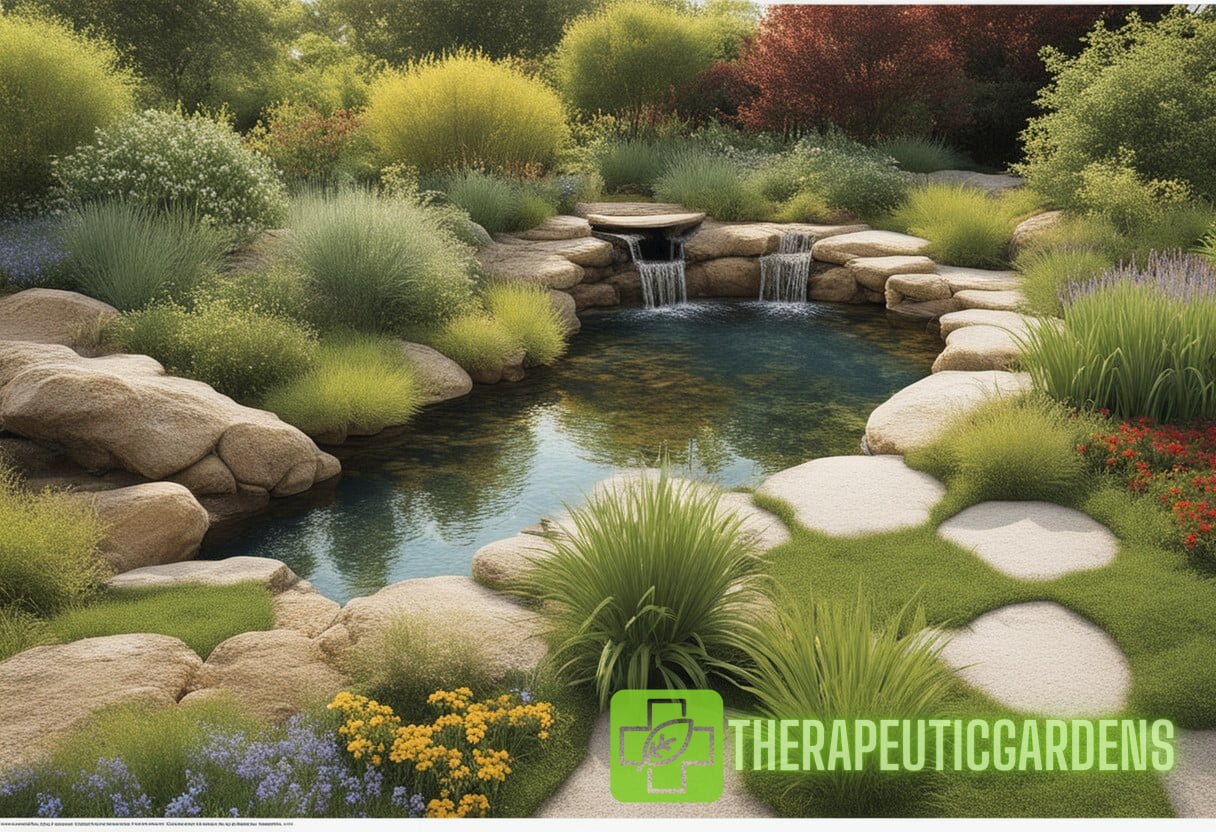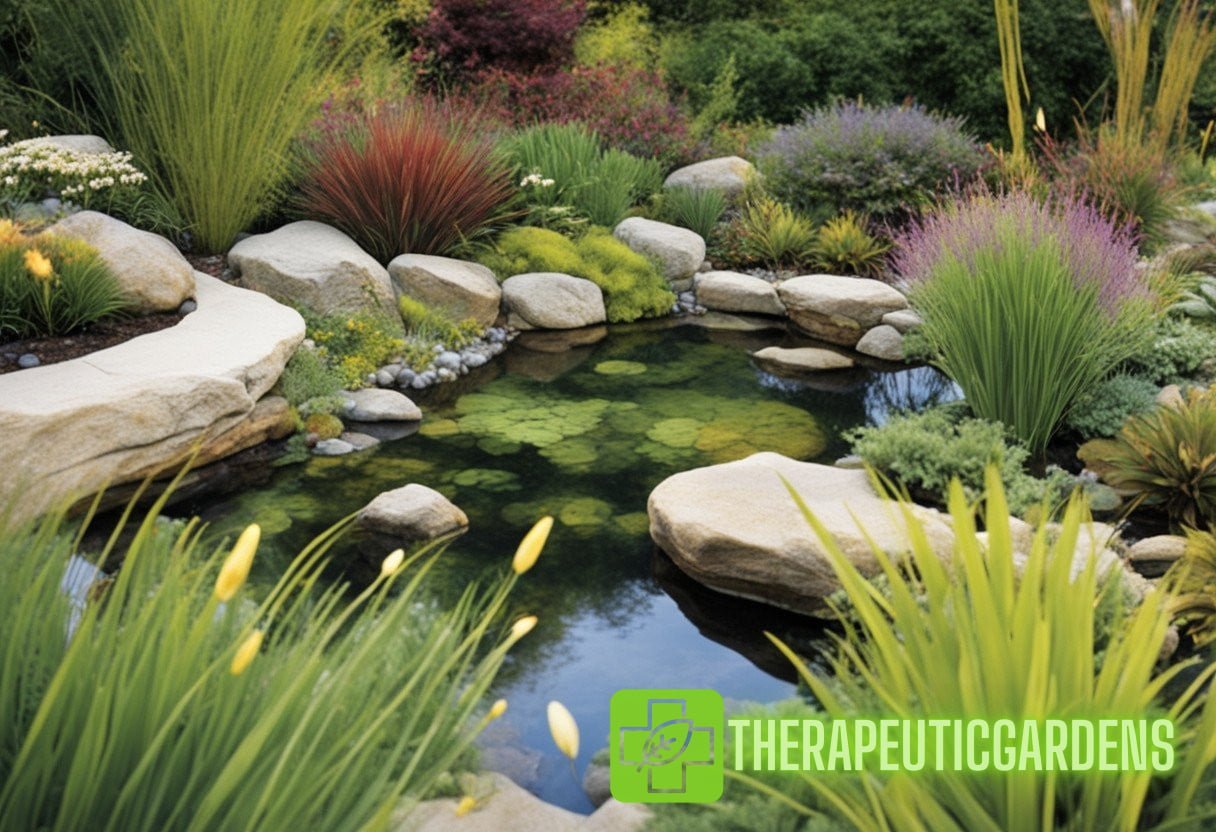Introduction
In the evolving domain of sustainable garden design, integrating native flora and water features offers a harmonious approach that leverages the natural synergy between plant and aquatic ecosystems. This guide aims to provide an in-depth analysis of this integration, including the benefits, best practices, and step-by-step implementation strategies to create an ecologically sound garden.
Why Integrate Native Flora and Water Features?
Combining native plants with water features in a garden setting is not just aesthetically pleasing but also environmentally sustainable. Native flora adapts to local soil and weather conditions, offering a low-maintenance and resilient choice for gardeners. Similarly, water features can create a micro-ecosystem that supports local wildlife.
Environmental Benefits
Here are several key environmental benefits associated with this synergistic approach:
- Water Conservation: Native plants typically require less water compared to non-native species, reducing overall water usage.
- Habitat Creation: Both plants and water features provide habitats for various species, contributing to biodiversity.
- Soil Health: Native plants improve soil structure and fertility through their deep rooting systems.
Aesthetic and Recreational Benefits
Beyond environmental advantages, this approach also enhances the visual and recreational appeal of gardens:
- Visual Appeal: The combination of flora and water can create a serene and visually stimulating environment.
- Therapeutic Effects: Exposure to natural elements like plants and water is known to have calming and therapeutic effects. Discover more about these effects in our guide to inspiring design principles.
Steps to Create a Synergistic Garden
To create a garden that perfectly blends native flora with water features, follow these strategic steps designed to optimize sustainability and visual appeal.
Step 1: Site Analysis and Planning
Conduct an in-depth site analysis to understand the environmental conditions of your garden space such as:

- Soil Type: Identify your soil’s composition to select appropriate native flora.
- Sunlight Exposure: Determine areas with varying levels of sunlight to position both plants and water features optimally.
- Water Availability: Assess natural water sources or the feasibility of water circulation systems.
Step 2: Choosing the Right Native Plants
Selecting the right species of plants is crucial for the success of your garden. Consider plants that are:
- Drought-tolerant: These plants will minimize your water usage.
- Wildlife-friendly: Plants that attract pollinators like bees and butterflies.
- Complementary: Choose a mix of perennial and annual plants to ensure year-round appeal.
Step 3: Designing Water Features
Incorporate various types of water features to enhance biodiversity and visual interest:
- Ponds: A pond with diverse aquatic plants can provide a habitat for amphibians and birds.
- Streams: A flowing stream can add movement and sound to your garden.
- Fountains: Use fountains to aerate water, preventing stagnation and algae growth.
Step 4: Implementing Sustainable Practices
Adopt practices that promote sustainability and efficiency:
- Rainwater Harvesting: Collect rainwater to use for watering plants and filling water features.
- Mulching: Apply organic mulch to retain soil moisture and reduce weed growth.
- Natural Pest Control: Encourage beneficial insects and birds to control pests naturally.
Step 5: Maintenance and Monitoring
Regular maintenance and monitoring ensure the long-term health of your garden:
- Water Quality: Test water in your features regularly to maintain pH levels and clarity.
- Plant Health: Monitor for signs of disease or stress and take corrective action as needed.
- Seasonal Care: Adjust care routines to accommodate seasonal changes.

Best Practices for Integrating Native Flora and Water Features
Following best practices can maximize the benefits and minimize potential challenges:
Creating Plant Zones
Design your garden with various plant zones to cater to different plant needs:
- Marginal Plants: These thrive at the wet edges of ponds or streams.
- Submerged Plants: Essential for oxygenating the water and providing habitat for aquatic life.
- Terrestrial Plants: Choose hardy varieties that can handle occasional waterlogging.
Combating Invasive Species
Preventing the spread of invasive species is critical for maintaining the ecological balance of your garden:
- Regularly inspect your garden and promptly remove any invasive species.
- Avoid introducing non-native plants that could take over the native ecosystem.
Utilizing Native Aquatic Plants
Integrate native aquatic plants to enhance the ecosystem services of your water features:
- Floating Plants: Water lilies and duckweed provide shade and reduce algae growth.
- Emergent Plants: Cattails and bulrushes improve water filtration and offer habitat.
Conclusion
Integrating native flora and water features in garden design is not just a trend but a scientifically backed approach to creating sustainable, resilient, and beautiful outdoor spaces. By carefully selecting native plants, designing functional water features, and adopting sustainable practices, you can transform your garden into a thriving ecosystem that benefits both the environment and your well-being. For further inspiration and design principles, visit our detailed article on water garden design.
We hope this guide serves as a comprehensive resource for your journey into sustainable garden design. Remember, the key to a thriving garden lies in understanding and working with nature.


